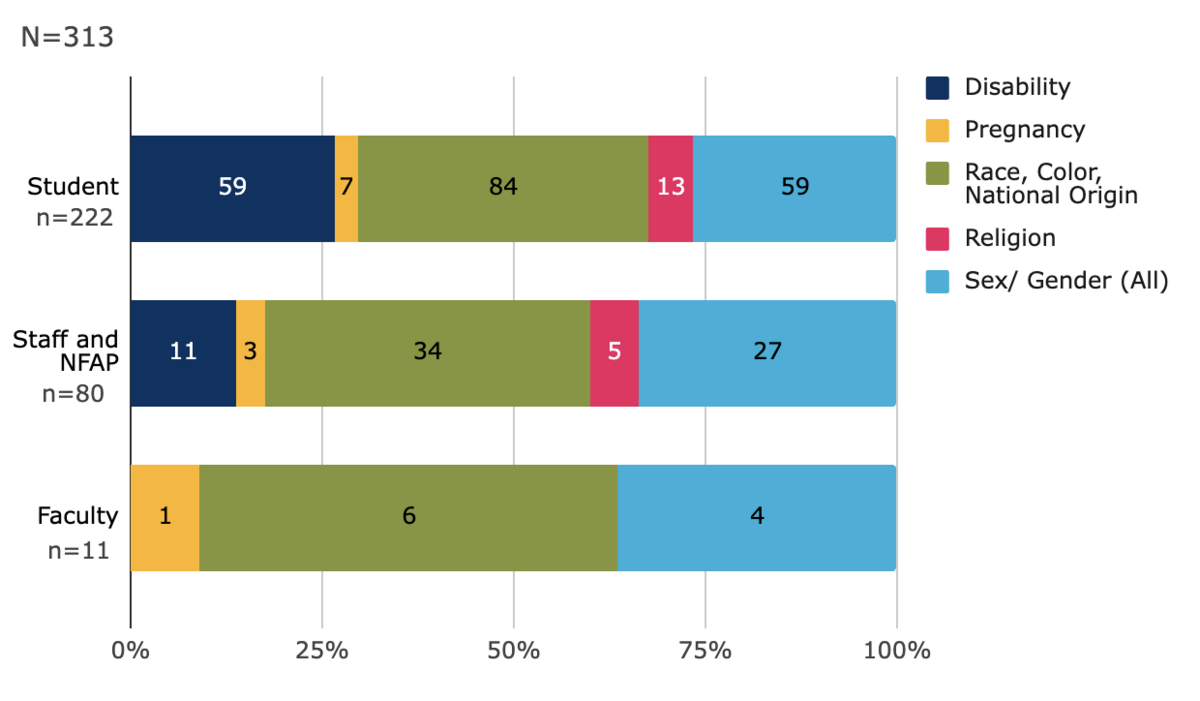Figure 15 tracks allegations by type and affiliation of the complainant (impacted party). (Note that a single allegation may have multiple complainants.) Of the 222 allegations with student complainants in 2022-23, the largest subcategory (37.8%) involved race, color, and national origin discrimination or harassment. Disability discrimination/harassment was the next largest, followed by complaints involving sexual orientation, gender identity, and gender expression. Among the 80 allegations with staff complainants, race, color, or national origin discrimination or harassment was most common, followed by sex/gender discrimination and sexual orientation, gender identity, and gender expression. For faculty complainants, almost all allegations involved discrimination/harassment on the basis of race, color, national origin, or sex/gender.

Figure 15: The types of discrimination and harassment allegations by complainant affiliation
It is not surprising that the majority of complainants are students, as students greatly outnumber employees on campus. It is, however, significant to note an asymmetry between the proportion of employees among all complainants and the proportion of employees among respondents. Employees (staff and faculty) make up a higher percentage of respondents (Figure 16) than they do of complainants. This asymmetry, also manifested in SVSH allegations (Figure 12), likely reflects asymmetry in power dynamics that is inherent in, and potentially magnifies the impact of, many instances of alleged discrimination and harassment.

Figure 16: The types of discrimination and harassment allegations by respondent affiliations